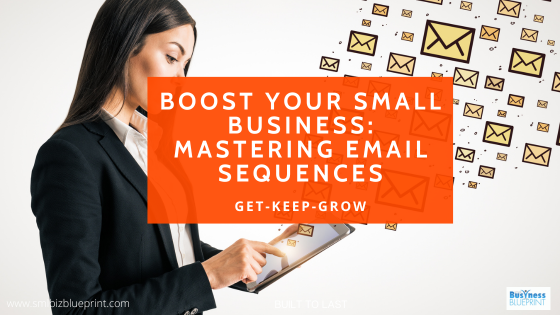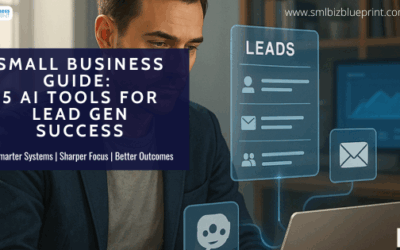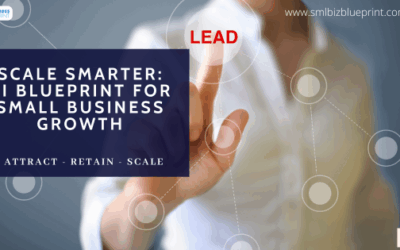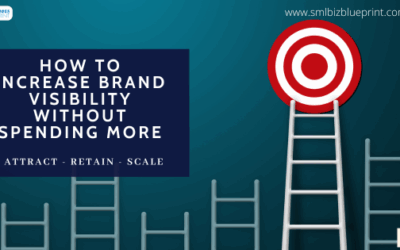Welcome to the world of Email Marketing Sequences. This powerful tool can transform your Small or Medium-sized Enterprise (SME).
This guide will uncover the secrets of successful email marketing sequences and how they can take your business to new heights.
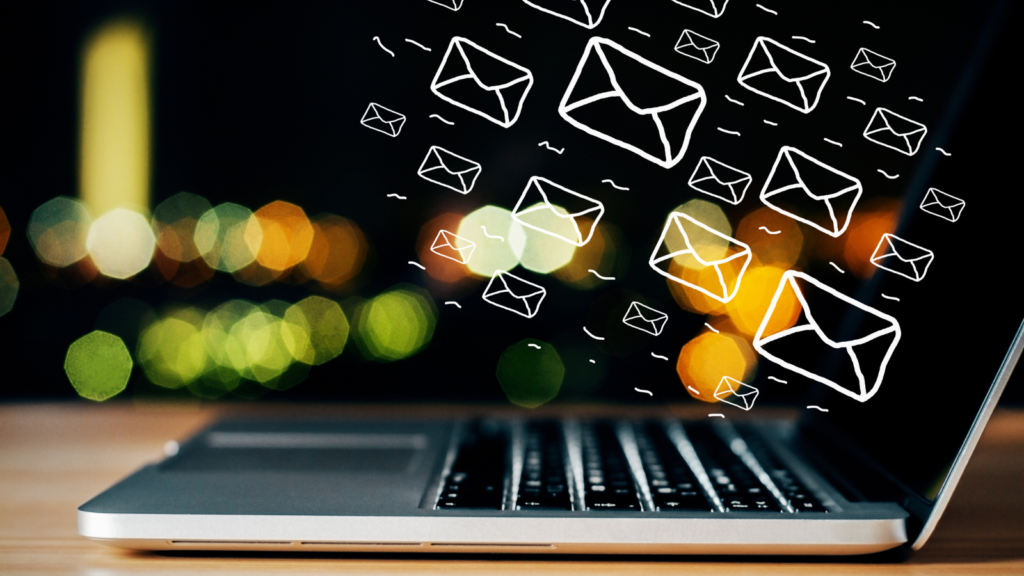
I. Understanding Email Marketing Sequences
Email marketing sequences are not just ordinary emails but your secret weapon for building lasting customer relationships.
You can engage, educate, and convert leads into loyal customers by sending strategically timed messages.
II. Benefits of Email Marketing Sequences for SMEs
Email marketing sequences aren’t just a passing trend but a game-changer for Small and Medium-sized Enterprises (SMEs).
This section will examine the manifold benefits these sequences bring, highlighting why every SME owner should consider them a cornerstone of their marketing strategy.
Building Trust and Credibility
In the fast-paced digital world, building trust with your audience is paramount. Email marketing sequences allow SMEs to do just that consistently and effectively.
Imagine your email sequence as a series of conversations with your potential customers.
You deliver value, address pain points, and showcase your expertise with each email. This builds trust over time, positioning your brand as a credible and reliable source.
Consider the scenario of an online clothing store. Through a well-crafted email sequence, they provide fashion tips, styling advice, and exclusive sneak peeks of upcoming collections.
As a result, subscribers begin to trust the store’s fashion expertise, making them more likely to purchase when the next email offers a special discount.
Nurturing Leads
SMEs often face the challenge of converting leads into customers. This is where email sequences truly shine.
Rather than bombarding leads with one-off promotions, email sequences nurture them through the sales funnel. You guide potential customers from awareness to interest and, finally, to action.
Let’s take the example of a software startup. Their email sequence educates subscribers about common industry challenges, demonstrates how their software solves these issues, and offers case studies showcasing successful implementations. When the final email arrives with a free trial offer, subscribers are interested and ready to take action.
Email marketing sequences provide the structure and consistency needed to turn leads into paying customers. They ensure no lead falls through the cracks, maximising your sales potential.
But that’s not all; one more crucial benefit is cost-effectiveness.
Cost-Effectiveness
SMEs often have limited budgets, making it essential to make every marketing dollar count. Email marketing sequences offer a cost-effective way to engage and convert leads.
Compared to traditional advertising channels, email marketing incurs significantly lower costs.
Consider the expenses of running paid ads on social media or search engines. These costs can quickly add up, and there’s no conversion guarantee.
On the other hand, email marketing allows you to reach your audience directly without the ongoing expenses of paid advertising.
Furthermore, you can set up your email sequences on autopilot with automation.
Once the initial setup is complete, your emails will be delivered automatically, saving you time and money while consistently nurturing leads.
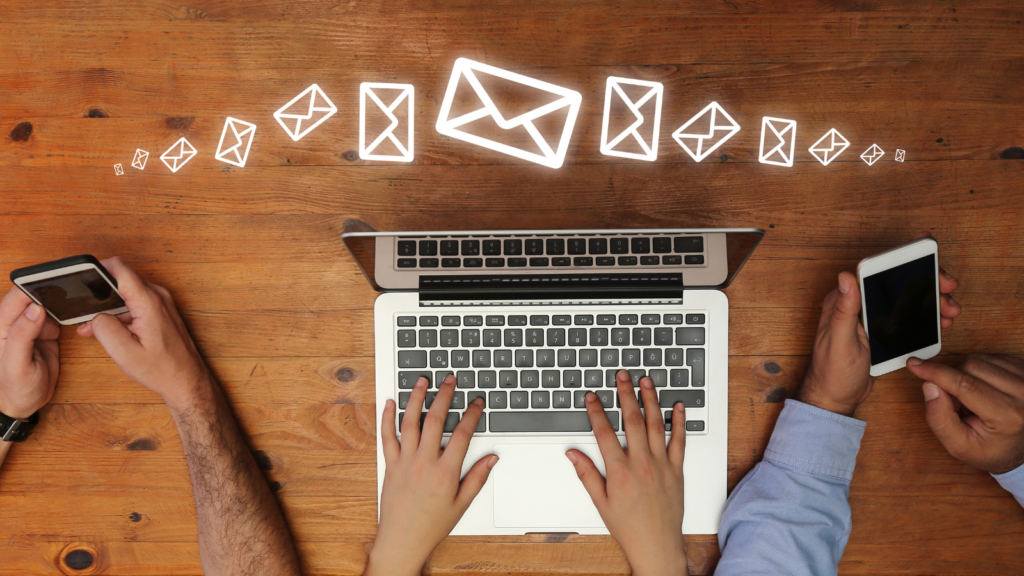
III. Types of Email Marketing Sequences
Email marketing is not a one-size-fits-all approach. To maximise its impact, SMEs must leverage various email marketing sequences, each serving a distinct purpose in the customer journey.
This section will explore these different types and help you understand when and how to use them effectively.
Welcome Sequences: Crafting Stellar First Impressions
The Welcome Sequence is your opportunity to make an unforgettable first impression. When someone subscribes to your email list or signs up for your service, they show interest in your brand. A well-structured Welcome Sequence capitalises on this enthusiasm.
Start with a warm and personalised welcome email thanking the subscriber for joining your community.
Subsequent emails can introduce your brand story, core values, and the benefits of being a part of your audience. You might also sprinkle in some exclusive offers or discounts to kick-start engagement.
For example, an eco-friendly products company can use its Welcome Sequence to share its commitment to sustainability, provide tips for a more eco-conscious lifestyle, and offer a discount on the first purchase. This not only introduces the brand but also encourages immediate action.
Onboarding Sequences: Guiding New Users to Success
An Onboarding Sequence becomes essential when users sign up for your product or service.
This sequence helps users understand your offering, maximise its value, and become proficient users.
The Onboarding Sequence often begins with a warm welcome email, followed by emails that guide users through key features and functionalities. Include tutorials, tips, and tricks to ensure users get the most out of your offering.
Consider a software-as-a-service (SaaS) platform. Their Onboarding Sequence could include emails explaining how to set up an account, a video tutorial demonstrating core features, and tips for optimising the software’s performance. This enhances the user experience and reduces the likelihood of users churning.
Educational Sequences: Providing Value and Expertise
Educational Sequences position your brand as a knowledgeable authority in your industry.
These sequences deliver valuable content, such as how-to guides, industry insights, and informative articles.
Suppose you run a digital marketing agency. In your Educational Sequence, you can share resources on SEO best practices, content marketing strategies, and the latest digital marketing trends.
You consistently keep your audience engaged and eager to learn more by providing valuable information.
Promotional Sequences: Driving Sales and Conversions
Promotional Sequences take centre stage when it’s time to convert your leads into paying customers.
These sequences focus on showcasing your products or services, highlighting their benefits, and persuading subscribers to purchase.
A well-structured Promotional Sequence doesn’t just bombard subscribers with sales pitches. Instead, it creates a compelling narrative around your offerings.
Begin with informative emails emphasising the problem your product solves, then gradually introduce the solution, testimonials, and special offers.
For instance, an e-commerce store might start a Promotional Sequence by addressing common fashion dilemmas, then gradually introduce its clothing line as the solution, culminating in a limited-time sale or exclusive discount.
Re-Engagement Sequences: Winning Back Lost Connections
Not all subscribers remain engaged indefinitely. Some may stop opening your emails or interacting with your brand.
That’s where Re-Engagement Sequences come into play. These sequences are designed to win back inactive subscribers and reignite their interest.
Re-engagement emails often begin with a reminder of the subscriber’s previous engagement with your brand. You can offer incentives like discounts or exclusive content to encourage them to re-engage.
If, after several attempts, a subscriber remains unresponsive, consider segmenting them out of your main list to maintain list health.
In summary, understanding the different types of email marketing sequences and their respective roles is pivotal for SME success. Each sequence plays a unique part in the customer journey, from making a stellar first impression to driving sales and re-engaging inactive subscribers.
IV. Creating Effective Email Content
Crafting compelling subject lines and engaging email content is an art that can make or break your email marketing sequences.
This section will delve into the strategies and techniques that will transform your content from ordinary to extraordinary, helping you connect with your audience on a deeper level.
Crafting Irresistible Subject Lines
Subject lines are the first thing your subscribers see, and they can determine whether an email gets opened or ignored. To craft irresistible subject lines, consider the following:
- Personalization: Include the recipient’s name or reference their past interactions.
- Curiosity: Pique their interest by hinting at valuable content or a compelling offer.
- Clarity: Be concise and clear about the email’s content or purpose.
- Urgency: Create a sense of urgency to encourage immediate action.
- Relevance: Ensure the subject line aligns with the email’s content.
For example, an online bookstore could use a subject line like “Exclusive Book Sale: 50% Off Your Wishlist Titles!” This subject line combines personalisation, curiosity, and urgency, making it highly clickable.
Crafting Engaging Email Content
Once you’ve enticed your subscribers with a captivating subject line, it’s time to deliver engaging content.
Here’s how:
- Provide Value: Offer something valuable in every email, whether information, entertainment, or discounts.
- Tell a Story: Stories create emotional connections. Share customer success stories, brand anecdotes, or industry narratives.
- Use Visuals: Incorporate images, videos, and infographics to break up text and make your emails visually appealing.
- Call to Action (CTA): Clearly state what you want the recipient to do next, whether it’s to click a link, make a purchase, or share your content.
- Mobile Optimization: Ensure your emails are mobile-friendly, as many people check emails on smartphones.
Consider an email from a fitness coach. Instead of a plain text email, they could send a visually appealing email with workout videos, healthy recipes, and a clear CTA to sign up for a virtual fitness class.

V. Personalization and Segmentation
Personalization and segmentation are the magic ingredients that take your email marketing sequences to the next level.
They allow you to tailor your messages to individual preferences and behaviour, significantly enhancing open and conversion rates.
Personalization
Personalization involves using data to customise your emails for each recipient.
You can personalise it by
- Using First Names: Addressing subscribers by their first name in the email.
- Recommendations: Suggesting products or services based on their past purchases or browsing history.
- Behavioural Triggers: Sending emails triggered by actions like abandoned carts or website visits.
For instance, an e-commerce store could send a personalised email with product recommendations based on a customer’s previous purchases.
Segmentation
Segmentation involves dividing your email list into groups based on shared characteristics or behaviour. By sending targeted content to each segment, you increase relevancy and engagement.
Segments can be created based on factors like
- Demographics: Age, gender, location, etc.
- Purchase History: Frequent buyers, occasional shoppers, etc.
- Engagement Level: Active subscribers, inactive subscribers, etc.
A subscription box service could segment its list to send beauty product recommendations to subscribers interested in beauty and tech gadget recommendations to those interested in technology.
VI. Setting up Automation
Automation is your trusty ally in email marketing. It saves time, ensures consistency, and delivers results.
Here’s how to make it work for your SME:
- Selecting the Right Tools
Choose an email marketing platform with robust automation capabilities. Look for features like email sequence builders, behavioural triggers, and A/B testing. Popular options include MailChimp, HubSpot, GetResponse and ActiveCampaign.
- Creating Automated Sequences
Once you’ve selected your tools, start building your automated sequences. Map out the customer journey and identify touchpoints where automated emails can provide value.
This might include welcome sequences, onboarding emails, follow-ups after purchases, and more.
For instance, an online course provider can set up an automated sequence that delivers lessons and resources to new enrollees over several weeks, creating a seamless learning experience.
VII. Measuring and Analyzing Results
Your email marketing efforts should never be a shot in the dark. To continually improve your email sequences, you need to understand the metrics that matter:
- Open Rates
Open rates indicate how many recipients opened your email. Low open rates may signal problems with your subject lines or sender reputation.
- Click-Through Rates (CTR)
CTR measures how many people clicked on links within your email. A high CTR indicates that your content and CTAs are effective.
- Conversion Rates
Conversion rates tell you how many recipients took the desired action, whether it’s purchasing, signing up for a webinar, or downloading a resource.
By regularly analysing these metrics, you can identify areas for improvement in your email sequences.
For example, if your open rates are high, but CTR is low, you might need to work on making your CTAs more compelling or your content more engaging.
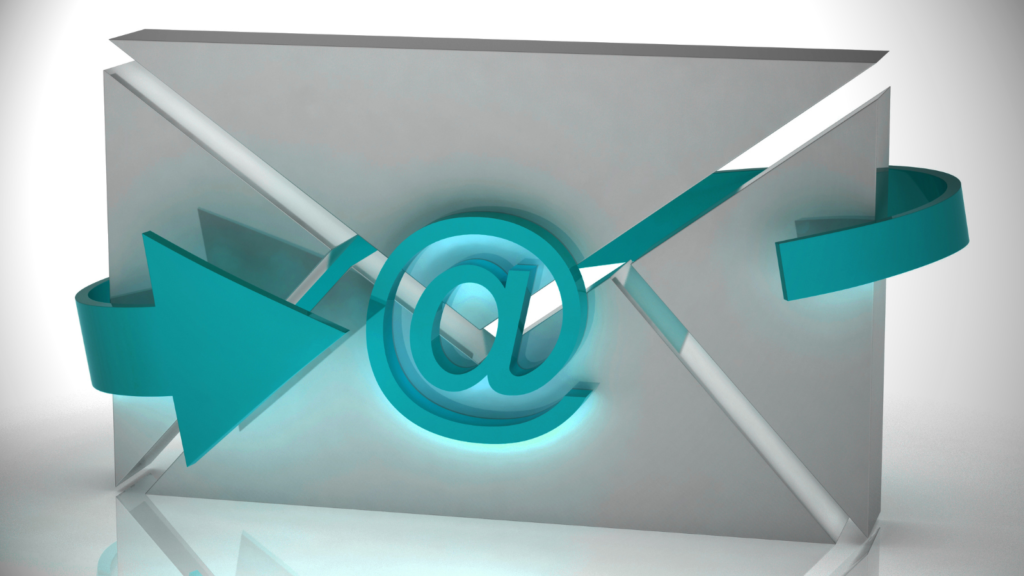
IX. Overcoming Common Challenges
Email marketing, while highly effective, isn’t without its hurdles. SMEs often encounter several challenges along the way.
This section will identify these common challenges and provide actionable solutions to ensure your email marketing stays on track.
Avoiding the Spam Folder
The dreaded spam folder is a constant threat to email marketers.
To stay out of it:
- Use Double Opt-in: Implement a process to confirm subscribers’ intentions.
- Regular List Cleaning: Remove inactive or unengaged subscribers to maintain list quality.
- Consistent Sending: Send emails at a consistent frequency to avoid spikes in activity.
- Avoid Spammy Content: Steer clear of trigger words like “free,” “guaranteed,” and excessive use of capital letters.
- Authentication: Set up SPF, DKIM, and DMARC records to improve email deliverability.
Content Fatigue
Keeping your content fresh and engaging is challenging.
Combat content fatigue by:
- Content Calendar: Plan your content in advance with a calendar to ensure variety.
- Segmentation: Segment your list to send targeted content based on interests.
- Repurposing: Repurpose and update successful content for a new audience.
- User-Generated Content: Encourage customers to share their experiences or reviews.
- Feedback Loop: Use feedback from subscribers to tailor your content.
Low Engagement Rates
Low engagement can be disheartening, but it’s an opportunity for improvement.
Solutions include
- Personalization: Use data to personalise content and subject lines.
- Segmentation: Send content to smaller, more targeted groups for higher relevancy.
- A/B Testing: Experiment with different elements to see what resonates with your audience.
- Re-engagement Campaigns: Create campaigns to win back inactive subscribers.
- Email Cleanup: Regularly remove hard bounces and invalid addresses from your list.
Technical Challenges
Technical glitches can disrupt your email marketing efforts.
To address these:
- Email Testing: Before sending, thoroughly test your emails across different email clients and devices.
- Responsive Design: Ensure your emails are responsive and display correctly on mobile devices.
- Link Checks: Regularly check links in your emails to avoid broken links or redirects.
- Backup Plans: Have a backup email design in case of rendering issues.
X. Compliance and Ethics
Operating within the boundaries of email marketing regulations is not just important; it’s non-negotiable. Your SME’s reputation and legal standing are on the line.
This section will emphasise the importance of compliance and ethical practices.
Email Marketing Regulations
Familiarize yourself with email marketing regulations in your region.
Two common ones include
GDPR (General Data Protection Regulation): This applies to businesses operating within the European Union and governs how personal data is collected and used.
CAN-SPAM Act: Pertains to commercial emails in the United States and mandates that senders provide a clear opt-out mechanism, accurate header information, and disclose their identity.
Permission-Based Marketing
Always obtain explicit permission before sending emails to individuals. This can be through opt-in forms, double opt-ins, or clear consent checkboxes during sign-up.
Clear Unsubscribe Mechanism
Every email you send should include a straightforward way for recipients to unsubscribe. Honour unsubscribe requests promptly.
Data Privacy and Security
Protect subscriber data at all costs. Use secure email marketing platforms and ensure compliance with data protection regulations.
Ethical Email Practices
Respect your subscribers’ time and inbox. Don’t over-send, use misleading subject lines, or use deceptive practices.
Honoring Unsubscribe Requests
Promptly remove unsubscribed individuals from your list to demonstrate respect for their preferences.
Failure to adhere to these regulations and ethical practices can result in legal consequences, damage your brand’s reputation, and hinder your email marketing success. By operating ethically and within the confines of the law, you build trust and credibility with your audience, which is essential for SMEs looking to grow through email marketing.
XI. Conclusion
Email marketing sequences are a must-have tool for SMEs looking to grow, engage, and convert their audience. It’s time to take action.
FAQs
Q: What exactly are email marketing sequences?
A: Email marketing sequences are a series of automated, strategically timed emails designed to engage and convert leads into customers.
Q: Why are email marketing sequences beneficial for SMEs?
A: Email sequences build trust, nurture leads, and are cost-effective, making them ideal for SMEs looking to grow.
Q: How do I create engaging email content?
A: Crafting compelling subject lines and email body content is crucial. Our guide provides actionable tips and templates.
Q: Is personalisation necessary, and how do I do it?
A: Personalisation boosts open rates. Learn to tailor messages and segment your email list for maximum impact.
Q: What metrics should I track, and why?
A: Open rates, click-through rates, and conversion rates matter. They help you refine your email sequences for better results.
Conclusion
Email marketing sequences are your key to SME success. They build trust, nurture leads, and drive conversions. Take action today to unlock their full potential and watch your business thrive.
Start implementing these strategies today, and watch your business flourish!

